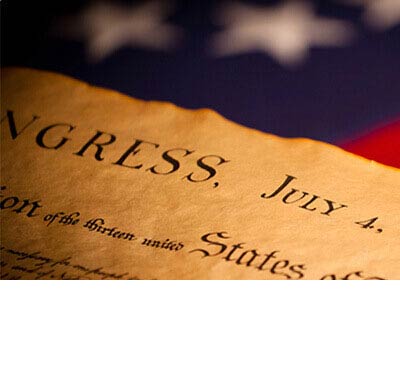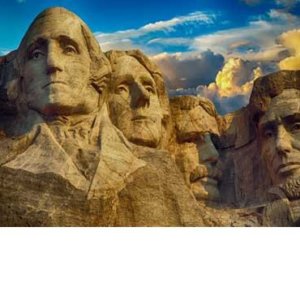- 1.1 Describe and compare the major American civilizations before the arrival of the Spanish.
- 1.2 Describe the European societies that engaged in conversion, conquest, commerce, and exploration.
- 1.3 Discuss the roles of Islam and Europe in West Africa and the slave trade.


Built from OpenStax’s US History
US History I
In this course, students trace the history of the United States, beginning with its roots in pre-1492 Europe, Africa, and the Americas and advancing through 1877 and the era of Reconstruction. They gain an understanding of early globalization, colonial societies, reforms, and protests, the American Revolution, industrialization, and westward expansion. Using the video examples, auto-graded self-practice exercises, and in-class and homework activities, students learn to think critically about primary source documents, engage in dialogues about complex sociocultural historical issues, and reflect on how and why the United States developed in the way that it did.
Learning Objectives/
- 2.1 Describe and discuss the importance of Portuguese and Spanish exploration.
- 2.2 Explain the changes brought by the Protestant Reformation and describe Spain’s response to it.
- 2.3 Describe and compare early English, French, and Dutch colonies.
- 2.4 Describe labor and commerce in Europe and the New World, and analyze the effects of the Columbian Exchange.
- 3.1 Discuss and compare the main Spanish American colonial settlements of the 1500s and 1600s.
- 3.2 Discuss and compare the Dutch and French colonies in North America.
- 3.3 Discuss and compare the first English settlements in America.
- 3.4 Describe the effects of colonization, including the rise of slavery, changes to Indian life, and environmental changes.
- 4.1 Analyze the causes and consequences of the Restoration.
- 4.2 Discuss the causes and outcomes of the Glorious Revolution.
- 4.3 Analyze the effects of slavery and the consumer revolution.
- 4.4 Describe the Great Awakening and the Enlightenment and their effects in British North America.
- 4.5 Describe the wars for empire and analyze their significance.
- 5.1 Discuss the status of Great Britain’s North American colonies after the French and Indian War, including British debt and the British Parliament’s response to the debt crisis.
- 5.2 Describe the 1765 Stamp Act and colonial responses to it.
- 5.3 Describe the 1767 Townshend Acts and analyze the resulting colonial protests and their consequences.
- 5.4 Describe the environment in the colonies in the early 1770s, and analyze the purposes of and reactions to the Tea Act of 1773 and the Coercive Acts.
- 5.5 Describe the state of affairs that led to the First Continental Congress, and explain its purpose and results.
- 6.1 Analyze the events that set the stage for the American Revolution and describe its beginnings.
- 6.2 Describe the British and American strategies and the key battles from 1776 through 1778.
- 6.3 Describe the British southern strategy and its results, the end of the war, and the Treaty of Paris.
- 6.4 Explain Loyalist and Patriot sentiments and describe different groups that participated in the Revolutionary War.
- 7.1 Describe republicanism and compare it with monarchy.
- 7.2 Describe the status of women and nonwhites in the new republic.
- 7.3 Describe state constitutions and the Articles of Confederation, and analyze the causes and consequences of Shay’s Rebellion.
- 7.4 Describe the issues and solutions of the 1787 Constitutional Convention and the conflicts over the ratification of the federal constitution.
- 8.1 Compare the visions of the Federalists and the Democratic-Republicans, and describe the Bill of Rights and Alexander Hamilton’s financial programs.
- 8.2 Describe the major foreign and domestic uprisings of the early 1790s and explain their effects.
- 8.3 Describe the conflicts between the Federalists and Democratic-Republicans and the effects of foreign relations on American politics, and analyze the importance of the Louisiana Purchase.
- 8.4 Analyze the causes, consequences, and important events of the War of 1812.
- 9.1 Describe the causes and effects of industrialization and the goals of workers’ organizations.
- 9.2 Describe the process of selling western land, the Panic of 1819, and key American innovators and inventors.
- 9.3 Describe the development and effects of improved methods of nineteenth-century domestic transportation.
- 9.4 Compare and contrast the perceptions and ideals of each social class.
- 10.1 Explain the new style of American politics in the 1820s, and describe the policies and results of John Quincy Adams’s presidency.
- 10.2 Describe the election of 1828 and the scandals of Andrew Jackson’s first term in office.
- 10.3 Explain the causes of the Nullification Crisis and the creation of the Whig Party.
- 10.4 Explain the legal wrangling that surrounded the Indian Removal Act, and describe how depictions of Indians in popular culture helped lead to Indian removal.
- 10.5 Explain Alexis de Tocqueville’s analysis of American democracy, and describe the election of 1840 and its outcome.
- 11.1 Describe and explain the significance of the Louisiana Purchase, the Adams- Onís Treaty, and the role played by the filibuster in American expansion.
- 11.2 Explain why the North and South differed over the admission of Missouri as a state.
- 11.3 Explain why American settlers in Texas sought independence from Mexico, and describe their early attempts to gain independence.
- 11.4 Describe the causes and outcomes of the Mexican-American War and the effect of the California Gold Rush on westward expansion.
- 11.5 Describe the Wilmot Proviso, the Free-Soil Party, and the Compromise of 1850, and analyze the causes and effects of each.
- 12.1 Explain the labor-intensive process of cotton production and the importance of cotton to the Atlantic and American antebellum economy.
- 12.2 Discuss and compare the lives, cultures, and customs of slaves and free blacks.
- 12.3 Describe the wealth distribution and culture of honor in the antebellum South, and explain the main proslavery arguments in the years prior to the Civil War.
- 12.4 Explain the expansionist goals of advocates of slavery, and describe the filibuster expeditions undertaken during the antebellum era.
- 13.1 Explain the connection between evangelical Protestantism and the Second Great Awakening, and describe the message of the transcendentalists.
- 13.2 Compare and contrast the utopian groups of the antebellum era.
- 13.3 Explain the different reforms aimed at improving the health of the human body, and describe the various factions and concerns within the temperance movement.
- 13.4 Describe the different approaches to reforming the institution of slavery and the abolitionist movement in the early to mid-nineteenth century.
- 13.5 Explain the connections between abolition, reform, and antebellum feminism, and describe the ways antebellum women’s movements were both traditional and revolutionary.
- 14.1 Analyze the causes and effects of the Compromise of 1850 and the Fugitive Slave Act.
- 14.2 Explain the political ramifications of the Kansas-Nebraska Act, and describe the founding of the Republican Party.
- 14.3 Explain the importance of the Supreme Court’s Dred Scott ruling, and discuss the principles of the Republican Party as expressed by Abraham Lincoln in 1858.
- 14.4 Describe and analyze the results of John Brown’s raid on Harpers Ferry and the election of 1860.
- 15.1 Explain the major events that occurred during the Secession Crisis, and describe the creation and founding principles of the Confederate States of America.
- 15.2 Assess the strengths and weaknesses of the Confederacy and the Union, and explain the strategic importance of the Battle of Bull Run and the Battle of Shiloh.
- 15.3 Explain the concept of “total war,” describe mobilization efforts, and explain why 1863 was a pivotal year in the war.
- 15.4 Describe the reasons why many Americans doubted that Abraham Lincoln would be reelected, and explain how the Union forces overpowered the Confederacy.
- 16.1 Describe Lincoln’s plan to restore the Union and the tenets of Radical Republicanism, and analyze the success or failure of the Thirteenth Amendment.
- 16.2 Describe the efforts made by Congress in 1865 and 1866 to bring to life its vision of Reconstruction, and explain how the Fourteenth Amendment transformed the Constitution.
- 16.3 Explain the purpose and implementation of the second phase of Reconstruction, describe the impeachment of President Johnson, and analyze the benefits and drawbacks of the Fifteenth Amendment.
- 16.4 Explain the reasons for the collapse of Reconstruction, and describe the efforts of white southern “redeemers” to roll back the gains of Reconstruction.







There are no reviews yet.